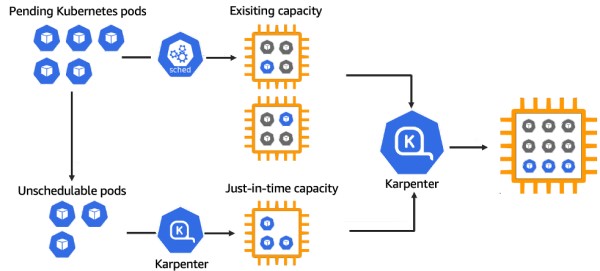Written by
Eric Kozlowski
on
on
Level up your managed Kubernetes with Karpenter
If you’re managing a Kubernetes platform, you might want to take a closer look at Karpenter. It’s a powerful enhancement over the traditional Cluster Autoscaler, offering more granular control for scaling based on specific workload needs. With the right configuration, Karpenter can lead to optimal resource utilization and lower costs over time.

Here are two key areas where Karpenter really shines:
- Efficient scaling down: Karpenter makes it quicker and easier to scale down your cluster compared to the standard Cluster Autoscaler. This means you can adapt to workload fluctuations more smoothly.
- Seamless use of Amazon EC2 Spot Instances: Karpenter natively handles Spot instance interruptions, giving you another opportunity to reduce costs. This feature allows you to take advantage of lower-priced instances without the usual headaches.
After trialing Karpenter in a production environment, here are some takeaways:
- Smart bin packing: Karpenter excels at optimizing node usage, but this means services may experience more pod disruptions than you might be used to. Regular consolidation of sparsely packed worker nodes is a feature, so it’s crucial that every service has a properly configured Kubernetes Pod Disruption Budget (PDB) in place.
- Revamped monitoring and alerts: The monitoring and telemetry for disrupted pods and node consolidation won’t directly mirror what you set up for the Cluster Autoscaler. Be prepared to retune your alerts and rethink your monitoring strategies to ensure they align with Karpenter’s operation.
Incorporating Karpenter into your Kubernetes setup can lead to significant improvements in efficiency and cost management. If you’re looking to optimize your managed Kubernetes experience, Karpenter could be just what you need.